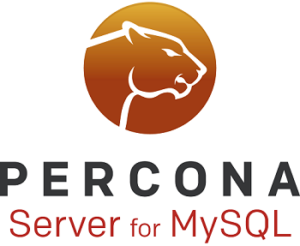
In this blog post, I’ll look at MyRocks performance through some benchmark testing.
As the MyRocks storage engine (based on the RocksDB key-value store http://rocksdb.org ) is now available as part of Percona Server for MySQL 5.7, I wanted to take a look at how it performs on a relatively high-end server and SSD storage. I wanted to check how it performs for different amounts of available memory for the given database size. This is similar to the benchmark I published a while ago for InnoDB (https://www.percona.com/blog/2010/04/08/fast-ssd-or-more-memory/).
In this case, I plan to use a sysbench-tpcc benchmark (https://www.percona.com/blog/2018/03/05/tpcc-like-workload-sysbench-1-0/) and I will execute it for both MyRocks and InnoDB. We’ll use InnoDB as a baseline.
For the benchmark, I will use 100 TPC-C warehouses, with a set of 10 tables (to shift the bottleneck from row contention). This should give roughly 90GB of data size (when loaded into InnoDB) and is a roughly equivalent to 1000 warehouses data size.
To vary the memory size, I will change innodb_buffer_pool_size from 5GB to 100GB for InnoDB, and rocksdb_block_cache_size for MyRocks.
For MyRocks we will use LZ4 as the default compression on disk. The data size in the MyRocks storage engine is 21GB. Interesting to note, that in MyRocks uncompressed size is 70GB on the storage.
For both engines, I did not use FOREIGN KEYS, as MyRocks does not support it at the moment.
MyRocks does not support SELECT .. FOR UPDATE statements in REPEATABLE-READ mode in the Percona Server for MySQL implementation. However, “SELECT .. FOR UPDATE” is used in this benchmark. So I had to use READ-COMMITTED mode, which is supported.
The most important setting I used was to enable binary logs, for the following reasons:
- Any serious production uses binary logs
- With disabled binary logs, MyRocks is affected by a suboptimal transaction coordinator
I used the following settings for binary logs:
- binlog_format = ‘ROW’
- binlog_row_image=minimal
- sync_binlog=10000 (I am not using 0, as this causes serious stalls during binary log rotations, when the content of binary log is flushed to storage all at once)
While I am not a full expert in MyRocks tuning yet, I used recommendations from this page: https://github.com/facebook/mysql-5.6/wiki/my.cnf-tuning. The Facebook-MyRocks engineering team also provided me input on the best settings for MyRocks.
Let’s review the results for different memory sizes.
This first chart shows throughput jitter. This helps to understand the distribution of throughput results. Throughput is measured every 1 second, and on the chart I show all measurements after 2000 seconds of a run (the total length of each run is 3600 seconds). So I show the last 1600 seconds of each run (to remove warm-up phases):

To better quantify results, let’s take a look at them on a boxplot. The quickest way to understand boxplots is to take a look at the middle line. It represents a median of measurements (see more at https://www.percona.com/blog/2012/02/23/some-fun-with-r-visualization/):

Before we jump to the summary of results, let’s take a look at a variation of the throughput for both InnoDB and MyRocks. We will zoom to a 1-second resolution chart for 100 GB of allocated memory:

We can see that there is a lot of variation with periodical 1-second performance drops with MyRocks. At this moment, I do not know what causes these drops.
So let’s take a look at the average throughput for each engine for different memory settings (the results are in tps, and more is better):
| Memory, GB |
InnoDB |
MyRocks |
| 5 |
849.0664 |
4205.714 |
| 10 |
1321.9 |
4298.217 |
| 20 |
1808.236 |
4333.424 |
| 30 |
2275.403 |
4394.413 |
| 40 |
2968.101 |
4459.578 |
| 50 |
3867.625 |
4503.215 |
| 60 |
4756.551 |
4571.163 |
| 70 |
5527.853 |
4576.867 |
| 80 |
5984.642 |
4616.538 |
| 90 |
5949.249 |
4620.87 |
| 100 |
5961.2 |
4599.143 |
This is where MyRocks behaves differently from InnoDB. InnoDB benefits greatly from additional memory, up to the size of working dataset. After that, there is no reason to add more memory.
At the same time, interestingly MyRocks does not benefit much from additional memory.
Basically, MyRocks performs as expected for a write-optimized engine. You can refer to my article How Three Fundamental Data Structures Impact Storage and Retrieval for more details.
In conclusion, InnoDB performs better (compared to itself) when the working dataset fits (or almost fits) into available memory, while MyRocks can operate (and outperform InnoDB) on small memory sizes.
IO and CPU usage
It is worth looking at resource utilization for each engine. I took vmstat measurements for each run so that we can analyze IO and CPU usage.
First, let’s review writes per second (in KB/sec). Please keep in mind that these writes include binary log writes too, not just writes from the storage engine.
| Memory, GB |
InnoDB |
MyRocks |
| 5 |
244754.4 |
87401.54 |
| 10 |
290602.5 |
89874.55 |
| 20 |
311726 |
93387.05 |
| 30 |
313851.7 |
93429.92 |
| 40 |
316890.6 |
94044.94 |
| 50 |
318404.5 |
96602.42 |
| 60 |
276341.5 |
94898.08 |
| 70 |
217726.9 |
97015.82 |
| 80 |
184805.3 |
96231.51 |
| 90 |
187185.1 |
96193.6 |
| 100 |
184867.5 |
97998.26 |
We can also calculate how many writes per transaction each storage engine performs:

This chart shows the essential difference between InnoDB and MyRocks. MyRocks, being a write-optimized engine, uses a constant amount of writes per transaction.
For InnoDB, the amount of writes greatly depends on the memory size. The less memory we have, the more writes it has to perform.
What about reads?
The following table shows reads in KB per second.
| Memory, GB |
InnoDB |
MyRocks |
| 5 |
218343.1 |
171957.77 |
| 10 |
171634.7 |
146229.82 |
| 20 |
148395.3 |
125007.81 |
| 30 |
146829.1 |
110106.87 |
| 40 |
144707 |
97887.6 |
| 50 |
132858.1 |
87035.38 |
| 60 |
98371.2 |
77562.45 |
| 70 |
42532.15 |
71830.09 |
| 80 |
3479.852 |
66702.02 |
| 90 |
3811.371 |
64240.41 |
| 100 |
1998.137 |
62894.54 |
We can translate this to the number of reads per transaction:

This shows MyRocks’ read-amplification. The allocation of more memory helps to decrease IO reads, but not as much as for InnoDB.
CPU usage
Let’s also review CPU usage for each storage engine. Let’s start with InnoDB:

The chart shows that for 5GB memory size, InnoDB spends most of its time in IO waits (green area), and the CPU usage (blue area) increases with more memory.
This is the same chart for MyRocks:

In tabular form:
| Memory, GB |
engine |
us |
sys |
wa |
id |
| 5 |
InnoDB |
8 |
2 |
57 |
33 |
| 5 |
MyRocks |
56 |
11 |
18 |
15 |
| 10 |
InnoDB |
12 |
3 |
57 |
28 |
| 10 |
MyRocks |
57 |
11 |
18 |
13 |
| 20 |
InnoDB |
16 |
4 |
55 |
25 |
| 20 |
MyRocks |
58 |
11 |
19 |
11 |
| 30 |
InnoDB |
20 |
5 |
50 |
25 |
| 30 |
MyRocks |
59 |
11 |
19 |
10 |
| 40 |
InnoDB |
26 |
7 |
44 |
24 |
| 40 |
MyRocks |
60 |
11 |
20 |
9 |
| 50 |
InnoDB |
35 |
8 |
38 |
19 |
| 50 |
MyRocks |
60 |
11 |
21 |
7 |
| 60 |
InnoDB |
43 |
10 |
36 |
10 |
| 60 |
MyRocks |
61 |
11 |
22 |
6 |
| 70 |
InnoDB |
51 |
12 |
34 |
4 |
| 70 |
MyRocks |
61 |
11 |
23 |
5 |
| 80 |
InnoDB |
55 |
12 |
31 |
1 |
| 80 |
MyRocks |
61 |
11 |
23 |
5 |
| 90 |
InnoDB |
55 |
12 |
32 |
1 |
| 90 |
MyRocks |
61 |
11 |
23 |
4 |
| 100 |
InnoDB |
55 |
12 |
32 |
1 |
| 100 |
MyRocks |
61 |
11 |
24 |
4 |
We can see that MyRocks uses a lot of CPU (in us+sys state) no matter how much memory is allocated. This leads to the conclusion that MyRocks performance is limited more by CPU performance than by available memory.
MyRocks directory size
As MyRocks writes all changes and compacts SST files down the road, it would be interesting to see how the data directory size changes during the benchmark so we can estimate our storage needs. Here is a chart of datadirectory size:

We can see that datadirectory goes from 20GB at the start, to 31GB during the benchmark. It is interesting to observe the data growing until compaction shrinks it.
Conclusion
In conclusion, I can say that MyRocks performance increases as the ratio of dataset size to memory increases, outperforming InnoDB by almost five times in the case of 5GB memory allocation. Throughput variation is something to be concerned about, but I hope this gets improved in the future.
MyRocks does not require a lot of memory and shows constant write IO, while using most of the CPU resources.
I think this potentially makes MyRocks a great choice for cloud database instances, where both memory and IO can cost a lot. MyRocks deployments would make it cheaper to deploy in the cloud.
I will follow up with further cloud-oriented benchmarks.
Extras
Raw results, scripts and config
My goal is to provide fully repeatable benchmarks. To this end, I’m sharing all the scripts and settings I used in the following GitHub repo:
https://github.com/Percona-Lab-results/201803-sysbench-tpcc-myrocks
MyRocks settings
rocksdb_max_open_files=-1
rocksdb_max_background_jobs=8
rocksdb_max_total_wal_size=4G
rocksdb_block_size=16384
rocksdb_table_cache_numshardbits=6
# rate limiter
rocksdb_bytes_per_sync=16777216
rocksdb_wal_bytes_per_sync=4194304
rocksdb_compaction_sequential_deletes_count_sd=1
rocksdb_compaction_sequential_deletes=199999
rocksdb_compaction_sequential_deletes_window=200000
rocksdb_default_cf_options="write_buffer_size=256m;target_file_size_base=32m;max_bytes_for_level_base=512m;max_write_buffer_number=4;level0_file_num_compaction_trigger=4;level0_slowdown_writes_trigger=20;level0_stop_writes_trigger=30;max_write_buffer_number=4;block_based_table_factory={cache_index_and_filter_blocks=1;filter_policy=bloomfilter:10:false;whole_key_filtering=0};level_compaction_dynamic_level_bytes=true;optimize_filters_for_hits=true;memtable_prefix_bloom_size_ratio=0.05;prefix_extractor=capped:12;compaction_pri=kMinOverlappingRatio;compression=kLZ4Compression;bottommost_compression=kLZ4Compression;compression_opts=-14:4:0"
rocksdb_max_subcompactions=4
rocksdb_compaction_readahead_size=16m
rocksdb_use_direct_reads=ON
rocksdb_use_direct_io_for_flush_and_compaction=ON
InnoDB settings
# files
innodb_file_per_table
innodb_log_file_size=15G
innodb_log_files_in_group=2
innodb_open_files=4000
# buffers
innodb_buffer_pool_size= 200G
innodb_buffer_pool_instances=8
innodb_log_buffer_size=64M
# tune
innodb_doublewrite= 1
innodb_support_xa=0
innodb_thread_concurrency=0
innodb_flush_log_at_trx_commit= 1
innodb_flush_method=O_DIRECT_NO_FSYNC
innodb_max_dirty_pages_pct=90
innodb_max_dirty_pages_pct_lwm=10
innodb_lru_scan_depth=1024
innodb_page_cleaners=4
join_buffer_size=256K
sort_buffer_size=256K
innodb_use_native_aio=1
innodb_stats_persistent = 1
#innodb_spin_wait_delay=96
# perf special
innodb_adaptive_flushing = 1
innodb_flush_neighbors = 0
innodb_read_io_threads = 4
innodb_write_io_threads = 2
innodb_io_capacity=2000
innodb_io_capacity_max=4000
innodb_purge_threads=4
innodb_adaptive_hash_index=1
Hardware spec
Supermicro server:
- CPU:
- Intel(R) Xeon(R) CPU E5-2683 v3 @ 2.00GHz
- 2 sockets / 28 cores / 56 threads
- Memory: 256GB of RAM
- Storage: SAMSUNG SM863 1.9TB Enterprise SSD
- Filesystem: ext4
- Percona-Server-5.7.21-20
- OS: Ubuntu 16.04.4, kernel 4.13.0-36-generic
The post A Look at MyRocks Performance appeared first on Percona Database Performance Blog.

 Join Percona Chief Evangelist Colin Charles as he covers happenings, gives pointers and provides musings on the open source database community.
Join Percona Chief Evangelist Colin Charles as he covers happenings, gives pointers and provides musings on the open source database community.


 Join Percona Chief Evangelist Colin Charles as he covers happenings, gives pointers and provides musings on the open source database community.
Join Percona Chief Evangelist Colin Charles as he covers happenings, gives pointers and provides musings on the open source database community.

 Please join Percona’s Chief Evangelist, Colin Charles on Tuesday, June 26th, 2018, as he presents
Please join Percona’s Chief Evangelist, Colin Charles on Tuesday, June 26th, 2018, as he presents 
 Percona announces the GA release of
Percona announces the GA release of 










